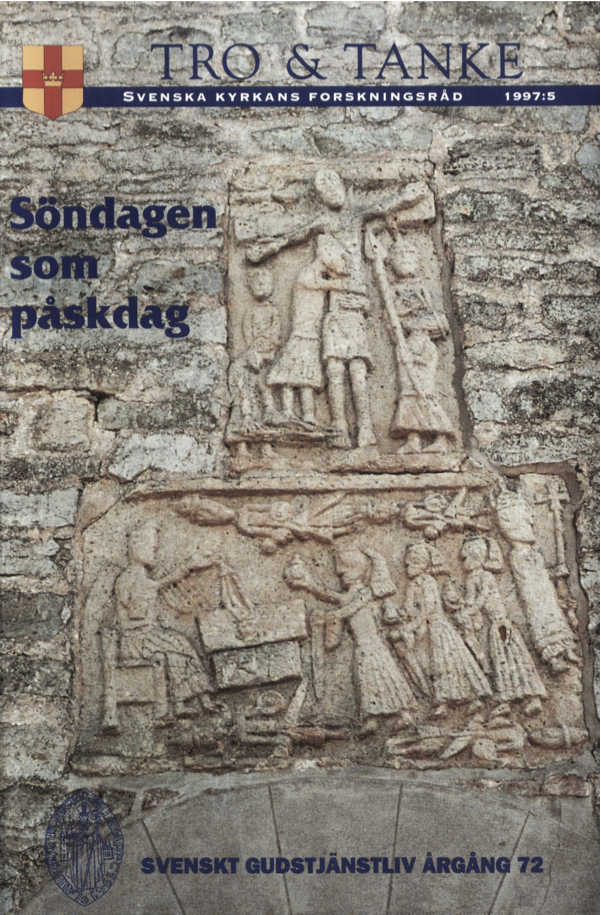Påskmotiv i psalmboken
Abstract
Lately, in international liturgical research and debate, the interpretation of Sunday as Easter Day in miniature has been much brought into focus. Since hymns play an important role in ordinary Sunday services, the author makes an inventory of Easter motifs in the Swedish hymn book (Den svenska psalmboken) compared, to a certain extent, with the English, Danish and Norwegian hymn books. From each of these, one hymn writer has been chosen as especially illuminating, namely Charles Wesley (1707-1788), N F S Grundtvig (1783-1872), and Svein Ellingsen (1929-).
Whereas Wesley and Grundtvig wrote some hymns emphasizing Sunday as the Day of Resurrection, no such hymns are to be found in the Swedish hymn book — a remarkable lacuna. However, the new Swedish breviaries contain a translation of a Medieval Latin hymn developing this theme. In the Latin hymns, Nature’s wonders are often seen as transparent images of the Easter wonder. Whereas this imagery is rather foreign to Swedish hymn writers of the 18th and 19th centuries, it is being used by Wesley and Grundtvig, and also by more recent Swedish hymn writers like J A Eklund (1863-1945), and Anders Frostenson (1906-).
The Swedish hymn book has several, translated, hymns by Martin Luther. Many of them contain an Easter motif, dramatically expressed as Christ's fight against and victory over the powers of Evil. — Whereas a 19th century writer like F M Franzén (1772-1847) could depict the believer as enjoying rather a secure, even idyllic, existence under the guidance of the Risen Lord, the powers of Evil being already defeated on the Cross, a 20th century author like Olov Hartman (1906-1982) stresses that the Risen Christ, even today, identifies Himself with human life in its most exposed and fragile state, constantly fighting to restore its dignity.
A good deal of hymns contain Easter motifs, while either singing God's praise, or while dealing with Church and Sacraments, or while describing Christian life. (So do, of course, the special Easter hymns, but these are left aside here as less relevant for the motif stating that every Sunday is an Easter Day.)
The authors of the comparison material have sometimes expressed motifs less well developed by Swedish hymn writers, as the growth in sanctification of the believer’s new life, and the Eucharist as nourishment for this growth.
Downloads
Publicerad
Nummer
Sektion
Licens
© författarna, Laurentius Petri Sällskapet för svenskt gudstjänstliv samt Artos & Norma bokförlag. Det är tillåtet att kopiera och använda material ur Svenskt Gudstjänstliv för forskningsändamål om källan anges. För övriga ändamål kontakta respektive artikelförfattare samt förlaget. Särskilda restriktioner kan gälla för bildmaterial.


